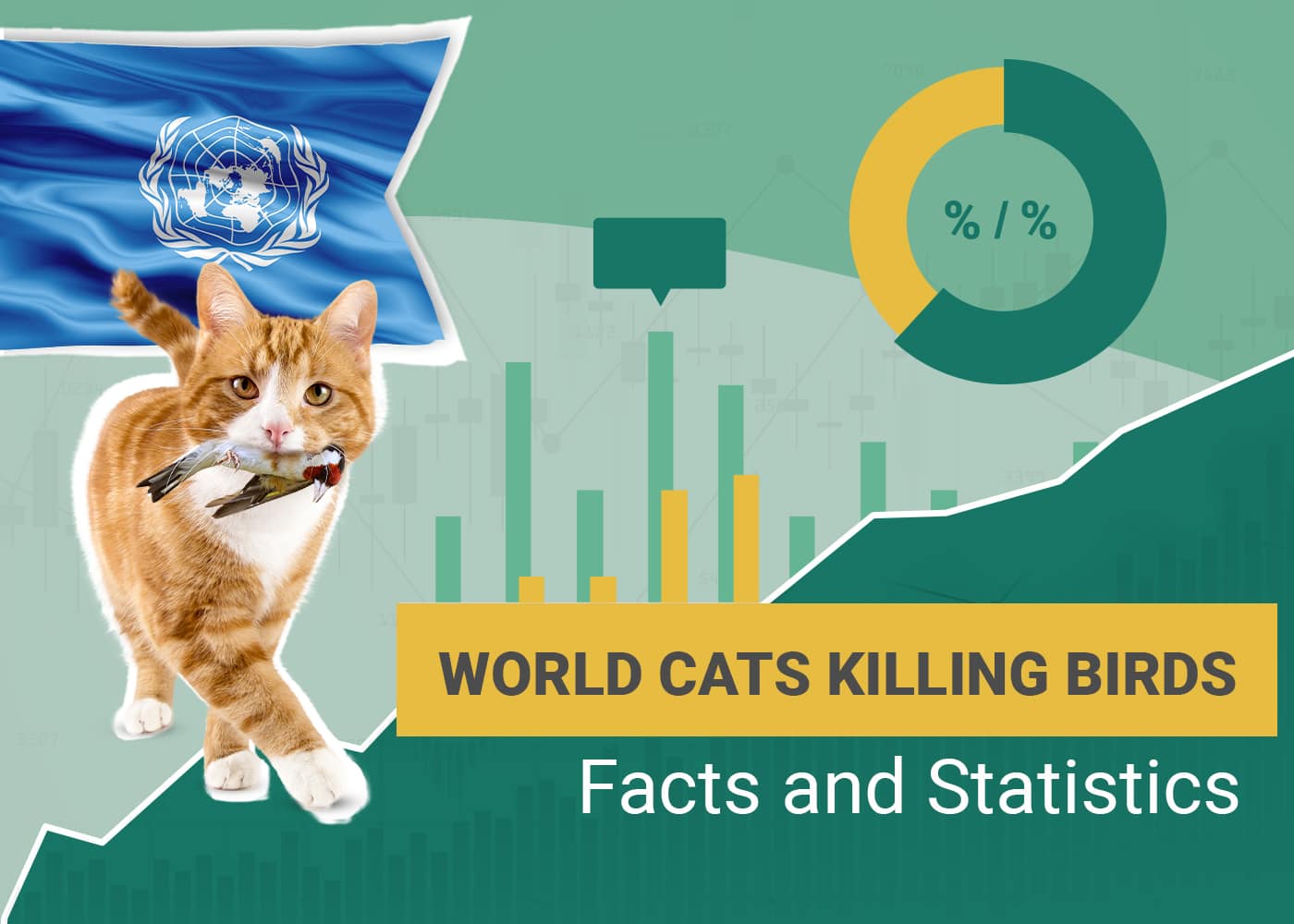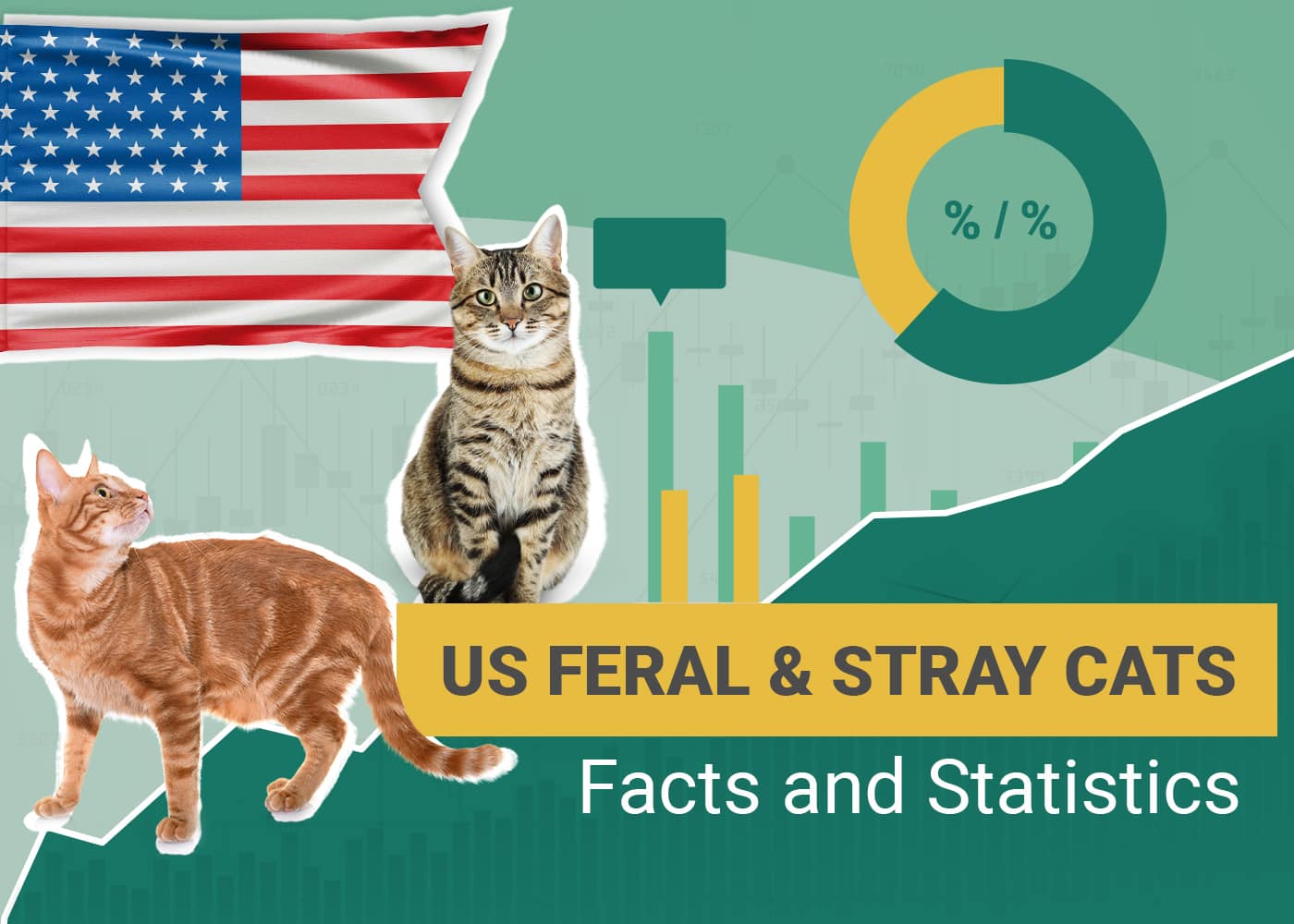Click to Skip Ahead
Note: This article’s statistics come from third-party sources and do not represent the opinions of this website.
Though domestic cats are popular and loving pets, they pose a single risk to birds, other wildlife, and the ecosystem. Domestic cats that live completely or partially outdoors represent a threat to biodiversity and adversely impact critically endangered bird species.
How many birds do cats kill every year? Just in the United States, cats kill anywhere from 1.3 to 4 billion birds annually. This is the result of tens of millions of outdoor cats. Let’s take a closer look at the numbers.
We go over cat killing statistics from different categories. Click the type below if you want to quickly access a certain topic:

The 12 Cats Killing Animals Statistics
- Cats kill approximately 1.3 to 4 billion birds every year in the US alone.
- Domestic cats are one of the world’s worst non-native invasive species.
- Cats contribute to 63 extinctions globally.
- More than half of US bird species are in decline.
- Cats threaten endangered species such as the piping plover, the Hawaiian petrel, and the Hawaiian goose.
- Americans own about 60 to 62 million cats.
- Roughly 65% of pet cats are strictly indoor cats.
- Roughly 35% of pet cats are outdoor cats.
- The average house cat kills two animals per week.
- Stray and feral cats kill three times as many animals as indoor pet cats.
- Stray and feral cats are estimated to number between 30 and 80 million.
- US animal shelters euthanize over 530,000 cats each year.
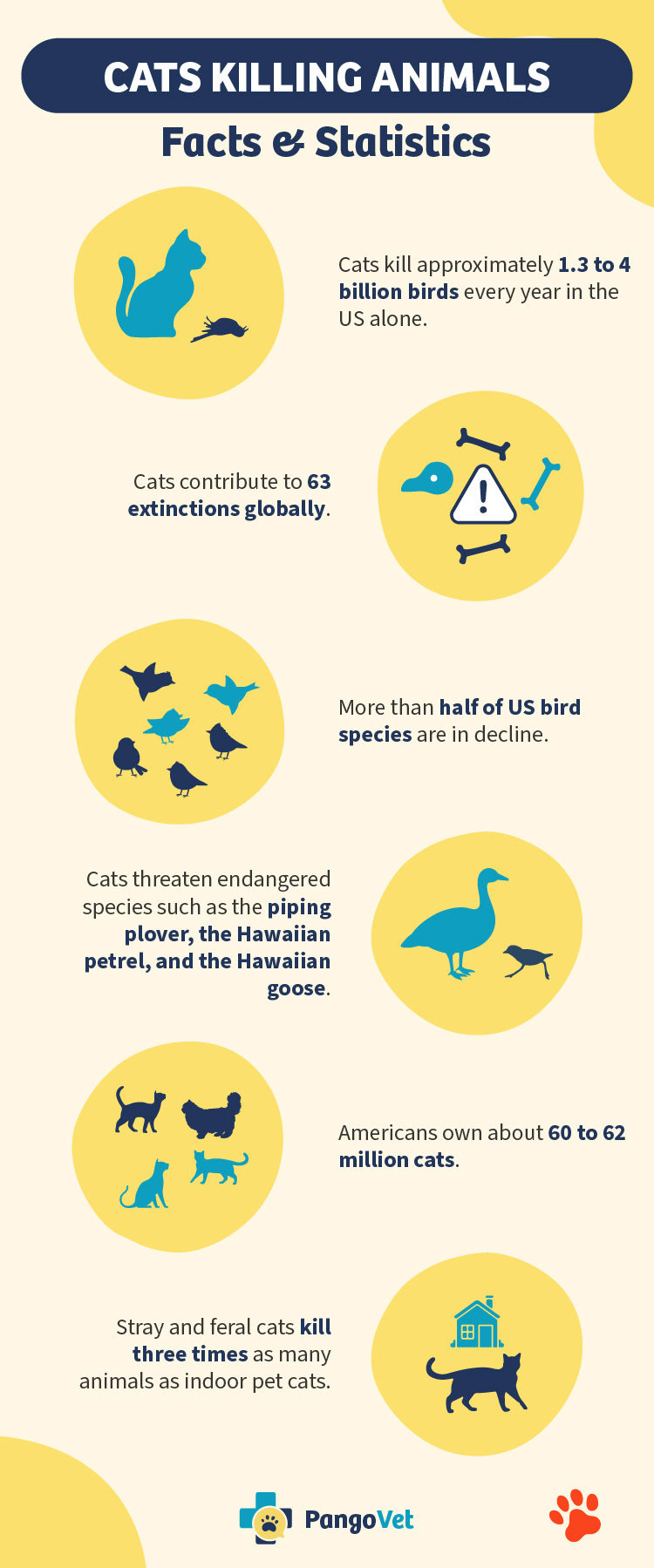

The Threat of Cats to Birds
1. Cats kill approximately 1.3 to 4 billion birds every year in the US alone.
(ABC Birds)
In North America, second only to habitat loss, cats are one of the largest human-related causes of bird deaths. While 1.3 to 4 million birds are killed each year in the US, 69% of those deaths are attributed to unowned or feral cats.
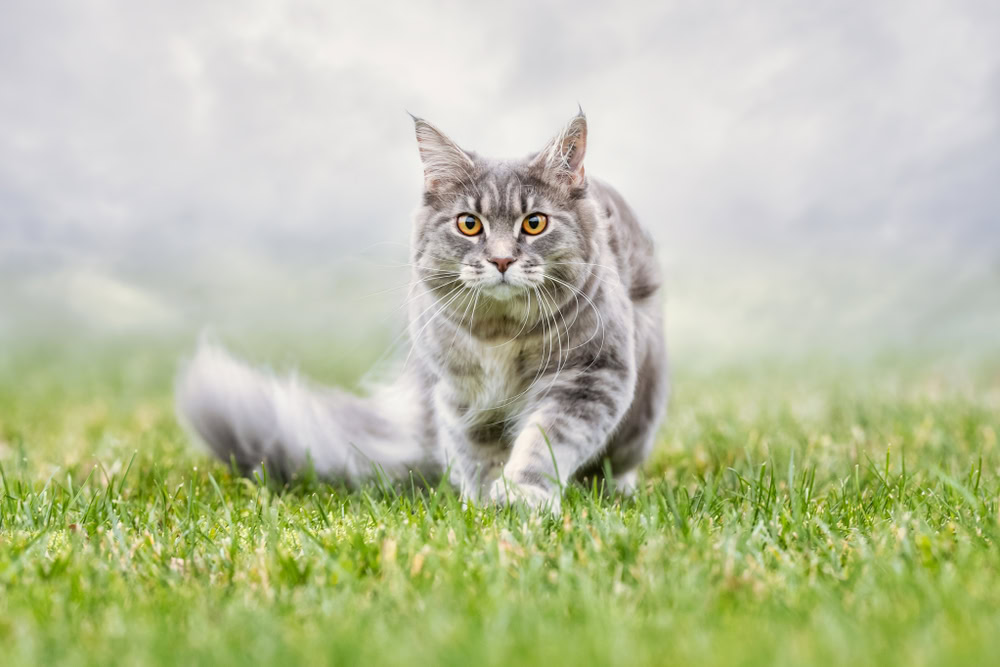
2. Domestic cats are one of the world’s worst non-native invasive species.
(ABC Birds)
How many animals do cats kill a year? Free-range domestic cats are found all over the world and have contributed to multiple wildlife extinctions on islands, making them one of the top 100 worst non-native invasive species in the world. Cats are estimated to kill between 1.3 billion and 4 billion birds and 6.3 to 22.3 billion mammals annually in the US. Again, most of this mortality is the result of unowned, free-range cats.
3. Cats contribute to 63 extinctions globally.
(British Ecology Society)
Cats are non-native to many areas and disrupt the ecosystem. Outdoor cats, even if they’re well-fed, are estimated to have contributed to 63 extinctions around the world—40 birds, 21 mammals, and two reptiles.
4. More than half of US bird species are in decline.
(Audubon)
According to the most recent reports, more than half of US bird species are in decline. Most have lost half their population in the last 50 years, and these are called “Tipping Point” species. This means they are on track to lose another half of their population in the same time frame if efforts to save them don’t improve. Those in danger include grassland birds like mountain plovers and bobolinks with a 34% loss, shorebirds like whimbrels and lesser yellowlegs with a 33% loss, and waterfowl and waterbirds having a 34% loss and 18% loss, respectively.
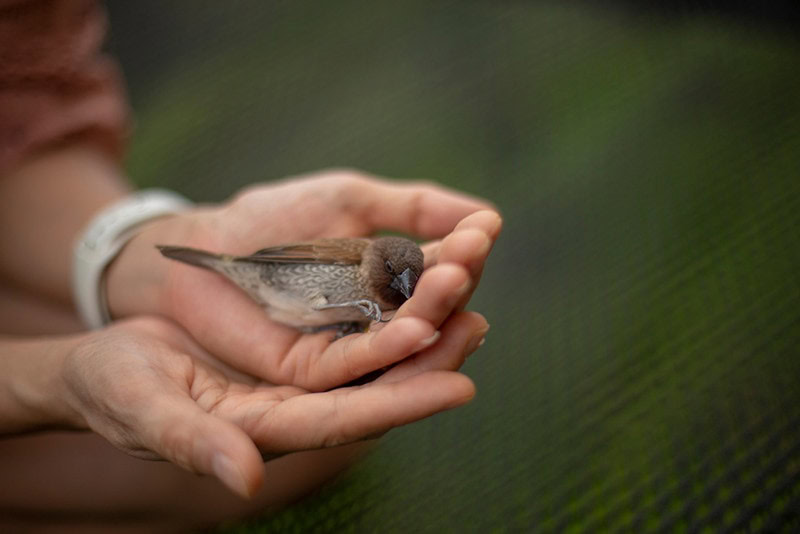
5. Cats threaten endangered species such as the piping plover, the Hawaiian Petrel, and the Hawaiian goose.
(ABC Birds)
Cats already contributed to the extinction of 63 species, and they continue to pose a threat to critically endangered species like the piping plover. After their introduction to the Hawaiian Islands in the 1700s, cats have threatened endangered island species like the Hawaiian petrel and the Hawaiian goose.

Domestic Cats as Housepets
6. Americans own about 60 to 62 million cats.
(American Veterinary Medical Association)
According to the AVMA 2022 Pet Ownership and Demographic Sourcebook roughly 37 million US households own anywhere from 60 to 62 million pet cats, with roughly 1.78 cats per household.
7. Roughly 65% of pet cats are strictly indoor cats.
(PR Newswire)
Of cat-owning households, about two-thirds of those surveyed said cats are strictly indoor. Though these cats could hunt and kill wildlife, they’re not a threat if they stay inside.
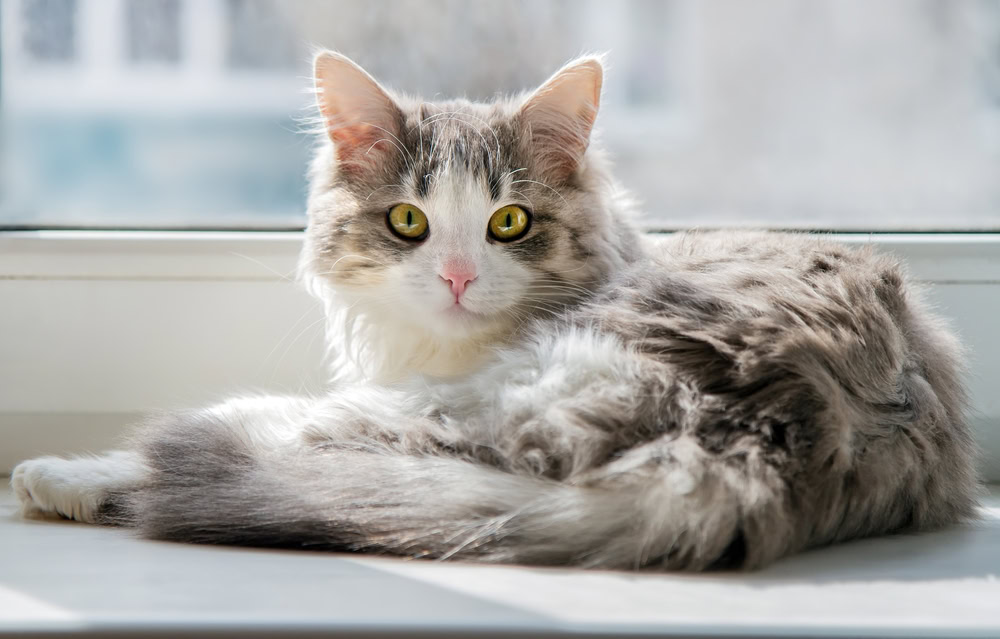
8. Roughly 35% of pet cats are outdoor cats.
(PR Newswire)
About one-third of pet cats are outdoor cats, either completely or partially, and prey birds and other wildlife. Cats are natural predators and often used for pest control on farms, but they don’t discriminate between nuisance animals and valued wildlife.

Stray and Feral Cats
9. The average house cat kills two animals per week.
(Smithsonian)
How many birds does the average cat kill? The average house cat with outdoor access kills around two animals per week, which may include birds or other wildlife. Based on these numbers, bringing these cats indoors could save roughly 40 to 54 million birds.
10. Stray and feral cats kill three times as many animals as indoor pet cats.
(BBC)
Stray and feral cats pose a greater threat to wildlife and kill three times as many animals as their indoor counterparts. Whether they’re born wild or abandoned former pets, stray and feral cats are always outdoors and have ample opportunity to hunt and kill wildlife. While feral cats have little contact with humans, strays are often cared for by people in the community, which allows their numbers to grow.
- Related Read: How Many Birds Do Cats Kill in Australia?
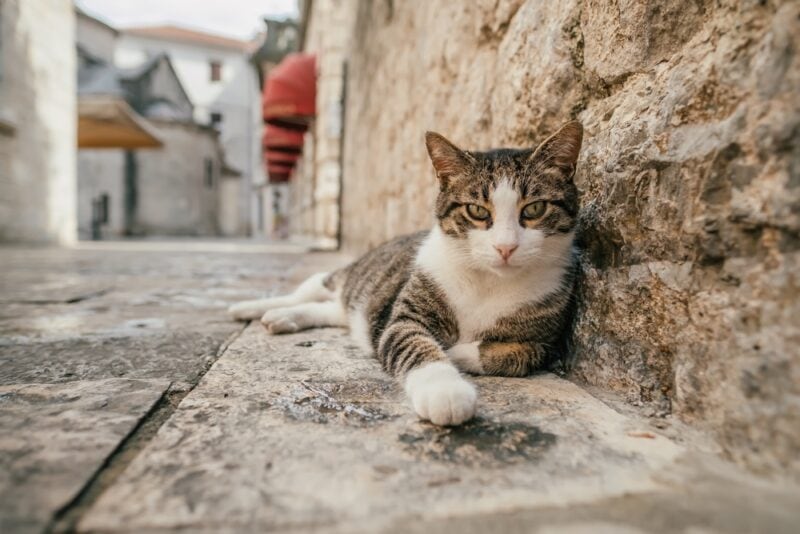
11. Stray and feral cats are estimated to number between 30 and 80 million.
(U.S. Department of Agriculture)
Feral cats are elusive by nature, making it difficult to estimate exact numbers. Conservation estimates are around 30 or 40 million stray and feral cats in the US, but some experts estimate the numbers to be around 80 million. This is a result of poor population control measures, intact animals, and cats’ ability to reproduce quickly and often.
12. US animal shelters euthanize over 530,000 cats each year.
(American Society for the Prevention of Cruelty to Animals)
Each year, shelters in the US euthanize approximately 920,000 animals, 530,000 of which are cats. These numbers declined from 2.6 million in 2011, which is due to higher adoptions and more successful returns of lost animals to owners.
Frequently Asked Questions
Should We Kill Cats to Save Birds?
After research into the data of how many birds are killed by cats each year, cat lovers and animal rights activists became heated and passionate. Cats are predators and an invasive species, regardless of how much we love them as pets, so the question became whether cats (particularly feral cats) should be culled to save bird populations.
Feral cats are overpopulated and threaten more than just birds – feral cats can spread disease and threaten public safety. Still, we have humane options to control feral populations, such as trap-neuter-release programs, which sterilize feral cats and return them to the wild. Animal rights organizations, like PETA, are morally against this solution, but the alternative is cats euthanized in shelters, exposed to environmental threats, and posing ecological risks themselves. (National Geographic)
What Other Risks Do Cats Pose?
Cats not only kill wildlife, but they spread disease. Outdoor cats can transmit rabies, feline leukemia, and the plague, as well as toxoplasmosis. This disease may have contributed to the extinction of the Hawaiian crow in 2002 and may be transmitted to people and mammals.
Cat feces contain toxoplasma, a single-celled parasite that can cause pain, fever, headache, and possible shifts in dopamine levels that trigger diseases like schizophrenia. Humans come in contact with toxoplasma through infected cat feces, drinking contaminated water, or ingesting undercooked meat. Humans also carry toxoplasma, and it typically only affects people with compromised immune systems. (National Library of Medicine)
Are Feral Cats Beneficial for Pest Control?
Wild predators like feral cats aren’t all bad. Wild rats carry many diseases, including methicillin-resistant staph aureus (MRSA), antibiotic-resistant E. coli, and C. diff. Cats can provide valuable pest control with rats since both are active at night. Throughout history, cats have been used to hunt rats on ships and farms. Several innovative cage-less shelter programs are introducing feral cat populations to areas with rodent problems to control populations and limit the risks to public health. (CNN)

Conclusion
According to the numbers, there’s no question that cats, a non-native species, pose a serious threat to bird populations, wildlife, and local ecosystems. Cats are natural hunters and predate by instinct, so the responsibility falls on the humans that brought cats to non-native areas and irresponsible pet owners that failed to spay and neuter pet cats or abandoned them in the wild. Mitigating the threat of birds to cats starts with controlling the feral cat populations and committing to keeping cats as strictly indoor pets.
